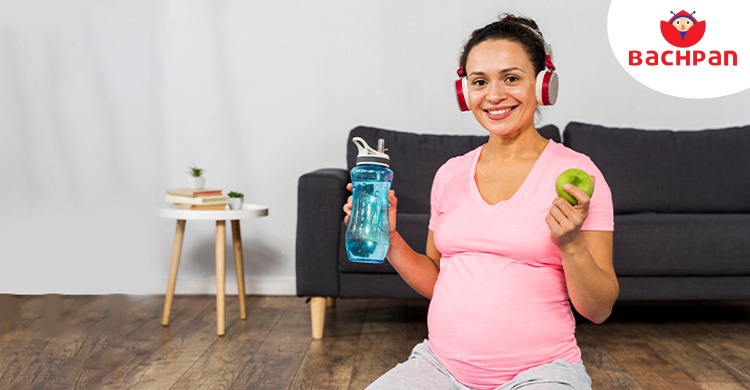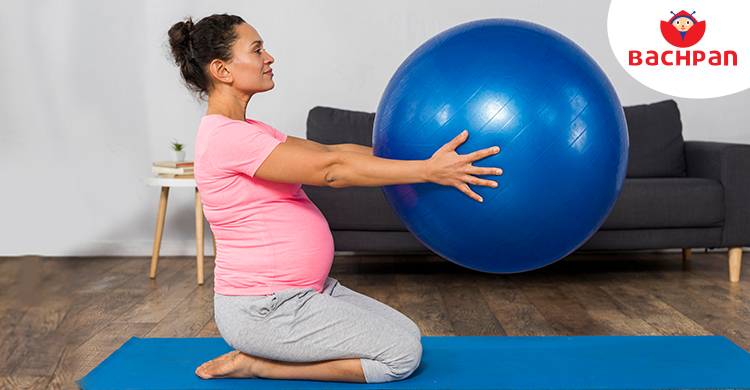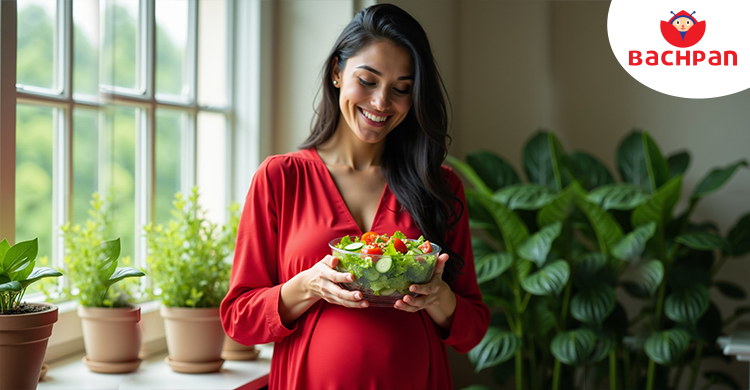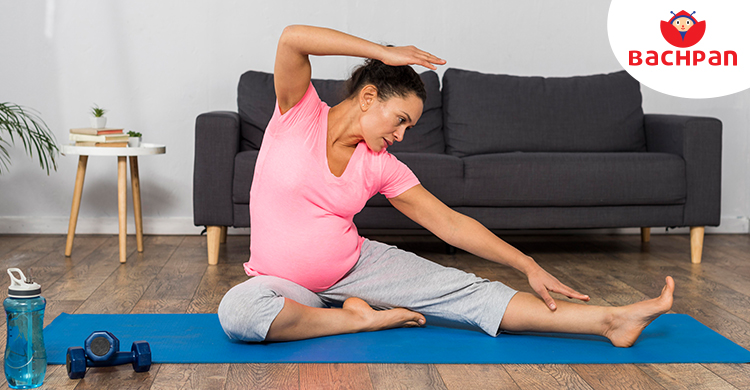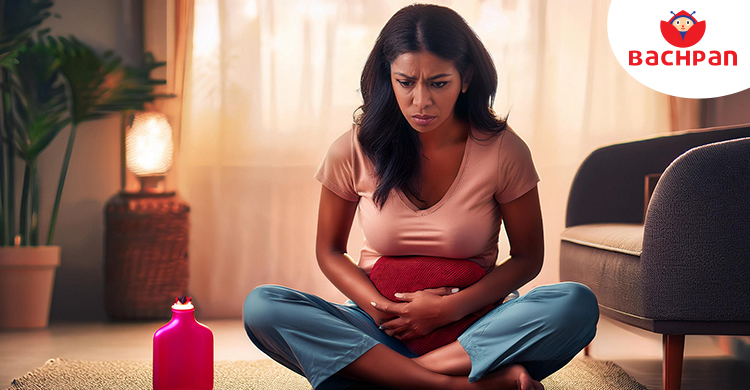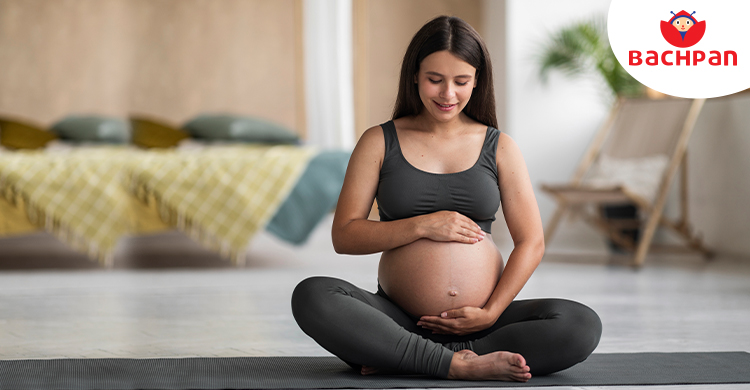How to Prevent and Relieve Pregnancy Leg Cramps

Are you looking for tips to help quickly relieve and soothe pregnancy leg cramps? Pregnancy is a journey filled with excitement and emotional turbulence. Pregnancy doesn’t only bring happiness to women; it brings severe leg cramps as well. Expectant mothers need to care for their bodies during this crucial and transformative time of pregnancy. This most common issue of leg cramps in pregnancy can be uncomfortable and disruptive and might create hindrances in a woman’s day-to-day activities. At Bachpan, we believe that a mother’s health is crucial for their children’s health. Today, we have brought these valuable tips to help expectant mothers effectively manage and soothe their leg cramps so that their journey to motherhood is comfortable.
Understanding Your Pregnancy Leg Cramps
The pregnancy leg cramps in women usually start in the second and third trimesters and affect the foot, calf and sometimes both. Most pregnant women complain about these leg cramps occurring at night. Understanding the real reason for your pregnancy leg cramps is important to treat them effectively.
1. Common Causes of Leg Cramps During Pregnancy
There are a few common causes that are responsible for causing leg cramps in pregnant women:
- Low Vitamin or Mineral Levels in the Body
At the time of pregnancy, there is a sudden decrease in the body’s calcium and magnesium levels due to the changes in hormonal levels and diet. Enriching your diet with foods high in vitamins and minerals can decrease the chances of leg cramps. If you are not getting enough micronutrients from your diet, you can ask your obstetrician to prescribe prenatal supplements. Vitamin B complex is an essential nutrient that helps relieve pregnancy leg cramps. If you are pregnant, you should increase your potassium, magnesium, and calcium-rich food intake, which will alleviate leg cramps and benefit your overall health.
- Changes in Blood Circulation
During pregnancy, blood volume increases to a very high level. Due to this increase in blood volume, blood circulation becomes slower, which causes issues like leg swelling and cramping in pregnant women. To improve blood circulation in the body, you can try sleeping on your left side. Sleeping on the left side will remove the pressure from the liver, improving blood circulation.
Keep your feet elevated, which will keep the blood flowing to your heart and lungs while reducing swelling in your body and legs. This practice will eventually relieve your pregnancy leg cramps. Pregnant women should remain active as sitting in a place for a very long time restricts the blood flow. In contrast, light movement and exercises help increase the overall blood flow.
- Muscle Fatigue and Weight Gain
At the time of pregnancy, women undergo excessive weight gain, and the additional weight of the baby causes muscle strain in the mother. The uterus of the woman might put undue pressure on the blood vessels. The strained and tired muscles and blood vessels can lead to the experience of pregnancy leg cramps.
- Dehydration
Remaining hydrated during pregnancy is important as it helps manage pregnancy leg cramps. Regular water intake keeps the body hydrated, making it easier for the heart to pump blood. Through this blood-pumping activity, the heart supplies oxygen to the body’s organs and muscles, reducing the chances of leg cramps.
(Also Read, Healthy Mom for Healthy Kids: What Should You Eat During Pregnancy? )
2. Key Risk Factors for Leg Cramps in Pregnancy
Pregnancy leg cramps usually go away on their own with a self-care routine and healthy diet and typically do not require medical care. But under the following conditions, you should visit your doctor to avoid complications:
- If you are experiencing severe discomfort due to leg cramps.
- If your legs have swollen and the skin around the legs has become red.
- If you are experiencing extreme muscle weakness and fatigue.
- If the frequency of the leg cramps has increased over time.
- If the leg cramps do not go away with dietary changes and self-care methods.
(Also Read, When can I take my Newborn Baby Outside? )
How to Prevent Leg Cramps During Pregnancy
To prevent leg cramps during your pregnancy, you can follow the below-given tips:
1. Staying Hydrated
Keep your body hydrated with fluids like coconut water, lemonade, and chia seeds water. Hydration will help your heart pump oxygen to all the body organs, reducing the risk of pregnancy leg and body cramps. When considering drinks to keep yourself hydrated, avoid caffeinated drinks like tea and coffee or drinks with unnatural amounts of sugar like soda or soft drinks. These drinks are known to cause dehydration in the body. So, when it comes to hydrating your body to ease pregnancy concerns like swelling, cramps and bloating, consider taking natural beverages.
2. Regular Stretching and Exercise
Various stretching exercises for pregnant women are available online on multiple platforms, and consistently practising them throughout the pregnancy will help you manage your leg cramps. Pregnant women should include yoga, light walking, and light stretching in their routine to manage their muscle pain, benefit their babies, and prepare themselves for labor and delivery.
3. Proper Nutrition
If you are pregnant, it becomes even more necessary for you to have a proper nutrition-rich diet. Nutrients like lean protein, iron, folic acid, calcium and multivitamins should be part of a pregnant woman’s diet. Try to include various kinds of vegetables, fruits, dairy products, grains, seeds and eggs in your pregnancy diet. Get all your necessary prenatal tests done, and if you are facing a deficiency of any nutrient, consider taking prescribed supplements. If you want to include meat, fish or seafood in your pregnancy diet, ensure they are cooked well at high temperatures. When your diet consists of all the nutrients your body needs for functioning at the crucial time of pregnancy, then your body will be well-equipped to handle concerns like pregnancy body or leg cramps.
(Also Read, How to Cut Your Newborn’s Nails )
Effective Relief Techniques for Sudden Pregnancy Leg Cramps
Pregnancy leg cramps are very unpredictable and can occur at any hour of the day. It is better to be prepared in advance with strategies for managing them.
1. Stretching During a Cramp
The habit of stretching your legs every night before sleeping can help prevent late-night leg cramps. To practice stretching, you can watch some pregnancy-friendly stretching exercises on YouTube or simply follow this easy stress where you can stand arm’s length away from a wall, placing your hands on it. Step your right foot back behind your left. Gradually bend your left knee while keeping your right leg straight and your heel on the ground. Hold the position for 30 seconds, ensuring your back stays straight and your hips face forward. Avoid shifting your feet inward or outward. Then, switch legs and repeat the stretch.
2. Apply Heat or Ice to the Cramped Area
When you start experiencing pregnancy leg or body cramps, you can apply a heating pad or a heating water bottle in the cramping area to ease the discomfort. A warm bath with Epsom salt is even more effective in soothing muscle spasms and tension in pregnancy. Ice packs are also helpful in relieving the pain associated with cramping legs. You can even try a combination of stretching, a heating pad, an ice pack, and foot massages as they complement each other in collectively alleviating the pain in your legs during pregnancy.
3. Massaging the Area
Massaging the cramping area gently in circular motions with oil-like sesame oil and adding a few drops of lavender oil can help ease pregnancy leg cramps at night. Massage with gentle circular motions increases blood flow in the cramping area, relieves tension, and soothes pain. Massage your legs before bed or whenever discomfort strikes. This helps reduce the frequency and severity of leg cramps.
(Also Read, How to Hold a Newborn Baby Safely? )
Conclusion
At Bachpan Play School, we understand that a healthy mom means a healthy baby. Pregnancy leg cramps, though common, can be managed with the proper care. By staying hydrated, eating a balanced diet, and incorporating gentle exercises, expectant mothers can ease discomfort and enjoy a smoother journey to motherhood. We prioritise the well-being of mothers because their health directly impacts their little ones. We believe that creating awareness and providing essential tips to new mothers can ensure a healthy and nurturing environment for both moms and their babies.




